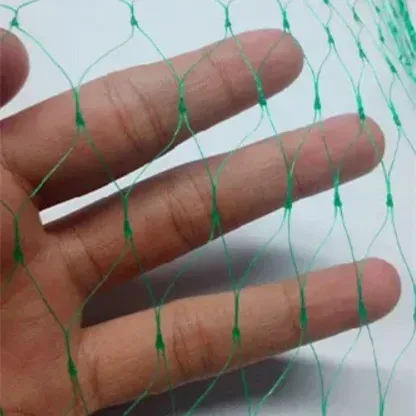-
 Afrikaans
Afrikaans -
 Albanian
Albanian -
 Amharic
Amharic -
 Arabic
Arabic -
 Armenian
Armenian -
 Azerbaijani
Azerbaijani -
 Basque
Basque -
 Belarusian
Belarusian -
 Bengali
Bengali -
 Bosnian
Bosnian -
 Bulgarian
Bulgarian -
 Catalan
Catalan -
 Cebuano
Cebuano -
 China
China -
 Corsican
Corsican -
 Croatian
Croatian -
 Czech
Czech -
 Danish
Danish -
 Dutch
Dutch -
 English
English -
 Esperanto
Esperanto -
 Estonian
Estonian -
 Finnish
Finnish -
 French
French -
 Frisian
Frisian -
 Galician
Galician -
 Georgian
Georgian -
 German
German -
 Greek
Greek -
 Gujarati
Gujarati -
 Haitian Creole
Haitian Creole -
 hausa
hausa -
 hawaiian
hawaiian -
 Hebrew
Hebrew -
 Hindi
Hindi -
 Miao
Miao -
 Hungarian
Hungarian -
 Icelandic
Icelandic -
 igbo
igbo -
 Indonesian
Indonesian -
 irish
irish -
 Italian
Italian -
 Japanese
Japanese -
 Javanese
Javanese -
 Kannada
Kannada -
 kazakh
kazakh -
 Khmer
Khmer -
 Rwandese
Rwandese -
 Korean
Korean -
 Kurdish
Kurdish -
 Kyrgyz
Kyrgyz -
 Lao
Lao -
 Latin
Latin -
 Latvian
Latvian -
 Lithuanian
Lithuanian -
 Luxembourgish
Luxembourgish -
 Macedonian
Macedonian -
 Malgashi
Malgashi -
 Malay
Malay -
 Malayalam
Malayalam -
 Maltese
Maltese -
 Maori
Maori -
 Marathi
Marathi -
 Mongolian
Mongolian -
 Myanmar
Myanmar -
 Nepali
Nepali -
 Norwegian
Norwegian -
 Norwegian
Norwegian -
 Occitan
Occitan -
 Pashto
Pashto -
 Persian
Persian -
 Polish
Polish -
 Portuguese
Portuguese -
 Punjabi
Punjabi -
 Romanian
Romanian -
 Russian
Russian -
 Samoan
Samoan -
 Scottish Gaelic
Scottish Gaelic -
 Serbian
Serbian -
 Sesotho
Sesotho -
 Shona
Shona -
 Sindhi
Sindhi -
 Sinhala
Sinhala -
 Slovak
Slovak -
 Slovenian
Slovenian -
 Somali
Somali -
 Spanish
Spanish -
 Sundanese
Sundanese -
 Swahili
Swahili -
 Swedish
Swedish -
 Tagalog
Tagalog -
 Tajik
Tajik -
 Tamil
Tamil -
 Tatar
Tatar -
 Telugu
Telugu -
 Thai
Thai -
 Turkish
Turkish -
 Turkmen
Turkmen -
 Ukrainian
Ukrainian -
 Urdu
Urdu -
 Uighur
Uighur -
 Uzbek
Uzbek -
 Vietnamese
Vietnamese -
 Welsh
Welsh -
 Bantu
Bantu -
 Yiddish
Yiddish -
 Yoruba
Yoruba -
 Zulu
Zulu
Effective Solutions for Hail Protection Using Advanced Netting Technology
The Importance of Anti-Hail Netting in Agriculture
Hailstorms can wreak havoc on agricultural crops, leading to devastating losses for farmers and impacting food supply chains. As climate change continues to influence weather patterns, the frequency and intensity of hail events are on the rise. In response to this growing concern, farmers and agricultural experts are turning to innovative solutions such as anti-hail netting to protect crops from the damaging effects of hail.
The Importance of Anti-Hail Netting in Agriculture
One of the most appealing aspects of anti-hail netting is its versatility. It can be installed over a variety of crops, including fruits like grapes, cherries, and apples, as well as vegetables and other sensitive plants. The nets can be adjusted to different heights and widths, depending on the type of crop and local climatic conditions. This flexibility makes anti-hail netting an invaluable tool in a farmer's arsenal, allowing producers in diverse agricultural sectors to protect their investments.
anti hail netting

Beyond hail protection, anti-hail netting offers additional benefits that contribute to healthier crops and higher yields. By reducing direct sunlight exposure, the nets can help maintain optimal temperature levels for the crops beneath them. This shading effect can be especially beneficial during hot summer months, preventing heat stress and allowing plants to thrive. Additionally, anti-hail nets can deter birds and other pests that threaten crops, thus further enhancing the overall health and productivity of the plants.
Implementing anti-hail netting is not without its challenges, however. The initial cost of installation can be a significant investment, particularly for small-scale farmers. Yet, when considering the potential financial losses incurred from hail damage, many farmers find the upfront expense justifiable in the long run. Furthermore, many governments and agricultural organizations are beginning to recognize the importance of this protective measure, offering subsidies and financial assistance to encourage its adoption.
As awareness of the impacts of climate change grows, so too does the need for effective agricultural practices. Anti-hail netting is a practical, proactive solution that enables farmers to prepare for and mitigate the risks associated with unpredictable weather patterns. By adopting this technology, farmers not only protect their crops but also contribute to food security and sustainability in their communities.
In conclusion, the implementation of anti-hail netting presents a vital adaptation strategy for modern agriculture. As hailstorms become more frequent, the necessity of such protective measures cannot be overstated. By investing in anti-hail netting, farmers can shield their crops from the detrimental effects of hail, ensure better yields, and foster a more resilient agricultural sector. Emphasizing the importance of resilience in farming practices, anti-hail netting stands as a testament to human ingenuity in the face of environmental challenges. As we look to the future, the continued development and adoption of such technologies will be crucial in sustaining agricultural productivity amidst the uncertainties of a changing climate.
-
Shipping Plastic Bags for Every NeedNewsJul.24,2025
-
Safety Netting: Your Shield in ConstructionNewsJul.24,2025
-
Plastic Mesh Netting for Everyday UseNewsJul.24,2025
-
Nylon Netting for Every UseNewsJul.24,2025
-
Mesh Breeder Box for Fish TanksNewsJul.24,2025
-
Expanded Steel Mesh Offers Durable VersatilityNewsJul.24,2025











